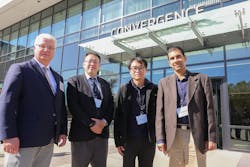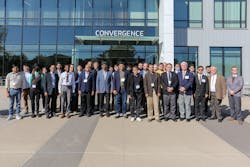CSME's annual summit at Purdue to bolster semiconductor security
Semiconductor chips require a level of security that protects them in everything from automobiles and cellphones to artificial intelligence and machine learning.
The Center for Secure Microelectronics Ecosystem (CSME) at Purdue is tackling these challenges by working to develop advances to protect microelectronics and semiconductors. The center will hold its annual meeting September 26-27 in West Lafayette, Indiana, with university partners and industry sponsors, highlighting the research that connects the multi-institutional academic community with semiconductor industry leaders and the U.S. Department of Defense to safeguard economic and national security interests.
The event's tentative agenda includes presentations on:
• a CAD framework for quantifiable assurance of third-party hardware IP
• device age estimation using intrinsic odometers
• advanced circuit techniques for side-channel-attack countermeasures
• environmental characterization of magnetic random access memory
• machine learning for side-channel detection
• detecting side-channel leakage through adversarial training of deep neural networks.
About the Author
Mike Bacidore
Editor in Chief
Mike Bacidore is chief editor of Control Design and has been an integral part of the Endeavor Business Media editorial team since 2007. Previously, he was editorial director at Hughes Communications and a portfolio manager of the human resources and labor law areas at Wolters Kluwer. Bacidore holds a BA from the University of Illinois and an MBA from Lake Forest Graduate School of Management. He is an award-winning columnist, earning multiple regional and national awards from the American Society of Business Publication Editors. He may be reached at [email protected]

Leaders relevant to this article:


